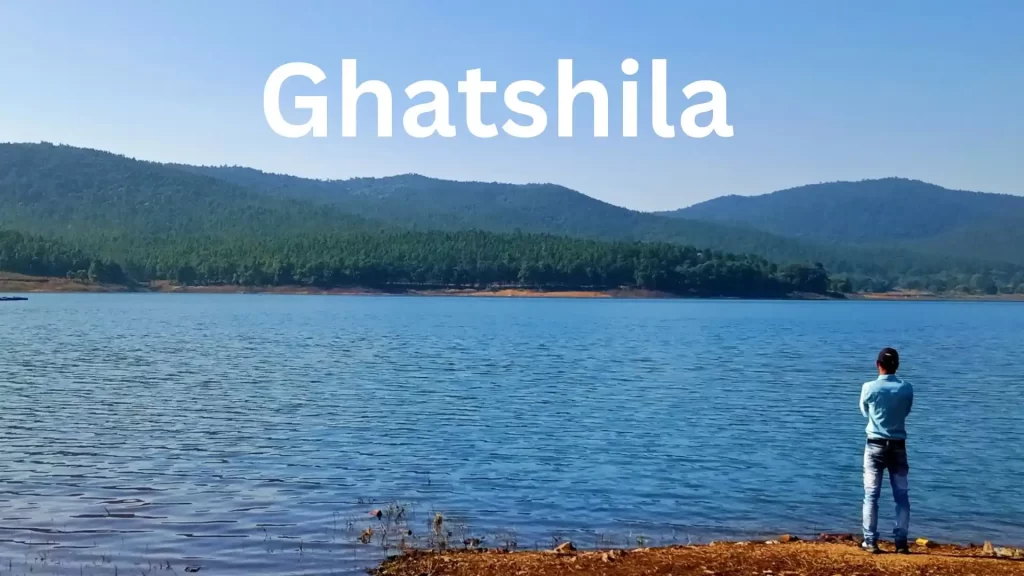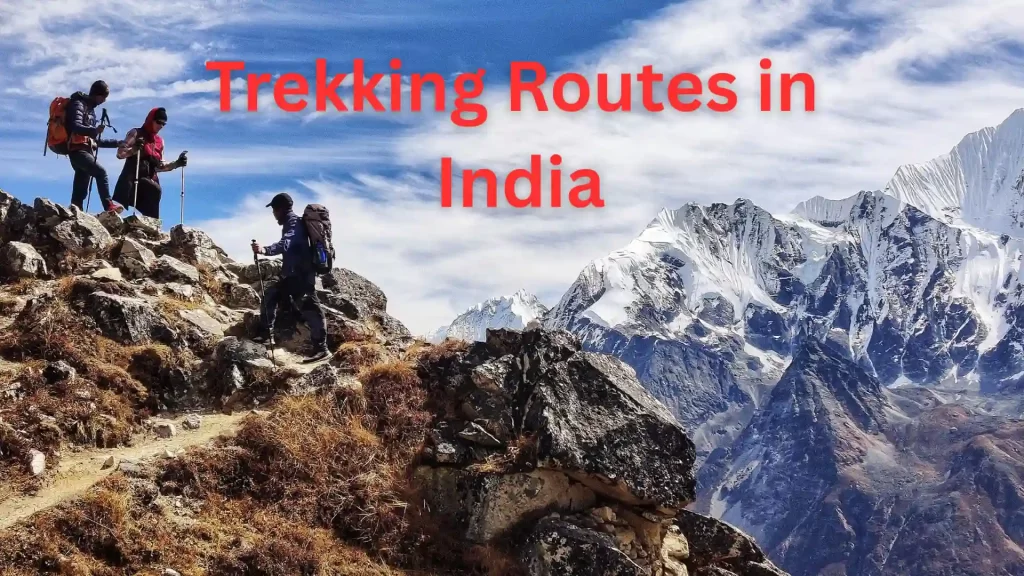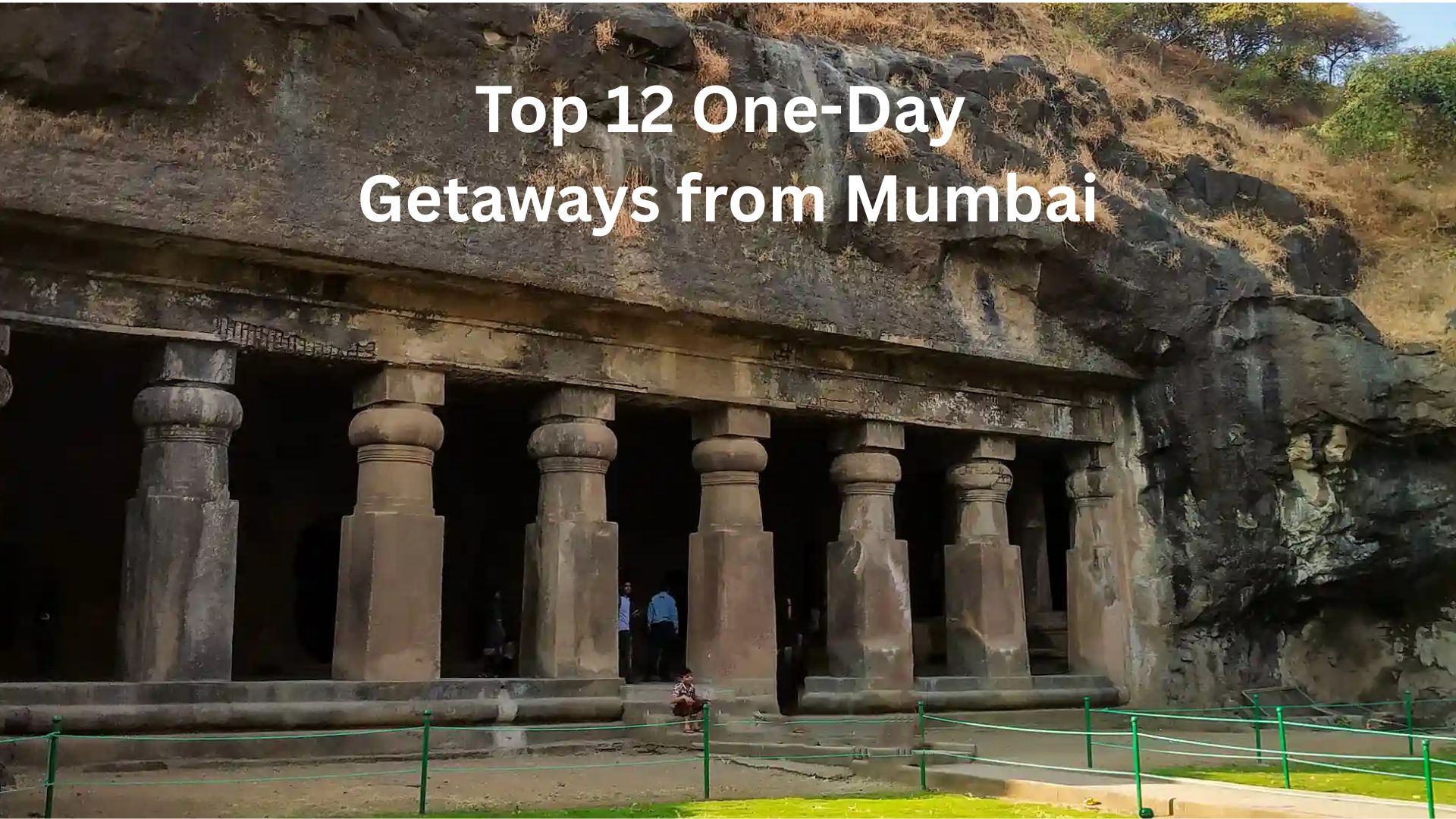
Escape the city buzz! Discover the best one-day getaways from Mumbai—perfect for nature lovers, history buffs, and quick relaxing adventures. Mumbai, the bustling metropolis, is a gateway to a variety of enchanting destinations perfect for a one-day escape. Below, I’ve compiled a comprehensive guide to 12 nearby spots, each offering a unique blend of history, geography, attractions, and cultural significance. This detailed survey aims to provide travelers with all the information needed to plan their trips, ensuring a memorable experience.
Top 12 One-Day Getaways from Mumbai:
1. Lonavala
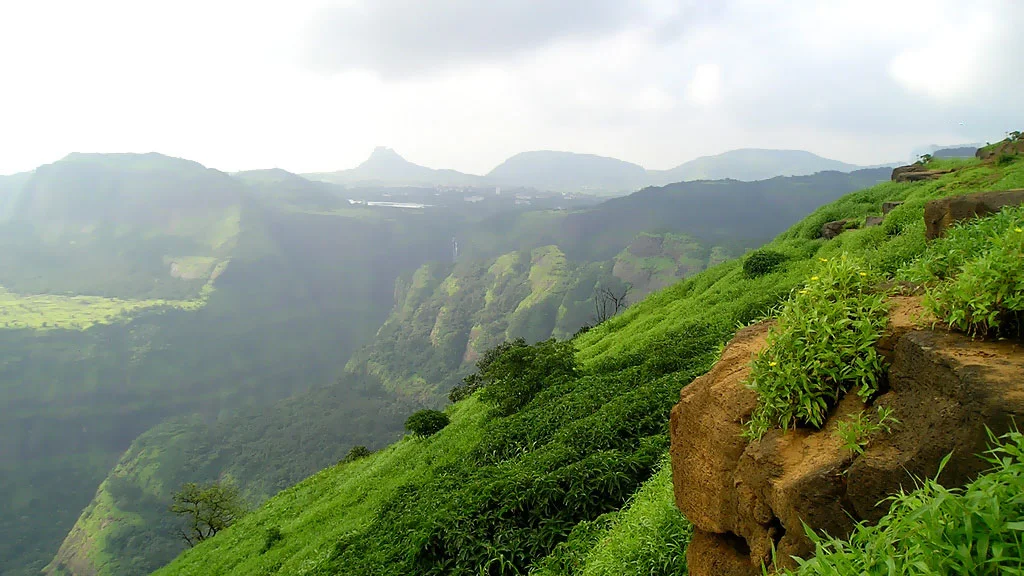
Lonavala is a popular hill station in the Sahyadri range of the Western Ghats, sitting at 622 meters above sea level, renowned for its lush green valleys, cascading waterfalls, and historical significance. The region has a rich past, having served as a strategic military outpost during the Maratha Empire under Chhatrapati Shivaji Maharaj, who utilized its rugged terrain for defense. In the 19th century, the British developed it as a hill station, leaving behind colonial bungalows and a legacy of tourism.
Visitors can explore ancient Buddhist rock-cut caves like Karla and Bhaja, dating back to the 2nd century BCE, which feature intricate carvings and offer a glimpse into India’s ancient spiritual history. The area is also famous for its chikki, a local sweet made of jaggery and nuts, sold by vendors lining the streets.
How to Reach from Mumbai: Located approximately 83 km from Mumbai, reachable by car via the Mumbai-Pune Expressway (about 1.5-2 hours) or by train to Lonavala station (frequent trains from Mumbai). Buses are available from Mumbai’s Dadar East to Lonavala (around 2-2.5 hours). From Lonavala station, autos are readily available to take you to major attractions like Bhushi Dam or Tiger’s Leap (approx. ₹50-100).
Activities: Trekking (e.g., Rajmachi Fort, Lohagad Fort), camping and boating at Pawna Lake, birdwatching, photography at Tiger’s Leap, picnics at Ryewood Park, exploring Karla and Bhaja Caves.
Nearest Attractions: Bhushi Dam, Tiger’s Leap, Rajmachi Fort, Lohagad Fort, Karla and Bhaja Caves, Pawna Lake, Ryewood Park, Shivaji Udyan.
Best Time to Visit: Monsoon (June-Sep) for lush greenery and waterfalls; Winter (Oct-Feb) for cool weather and trekking; Summer (Mar-May) for pleasant mornings and evenings.
Recommended For: Nature lovers, adventure seekers, history enthusiasts, families, birdwatchers, photographers.
2. Khandala
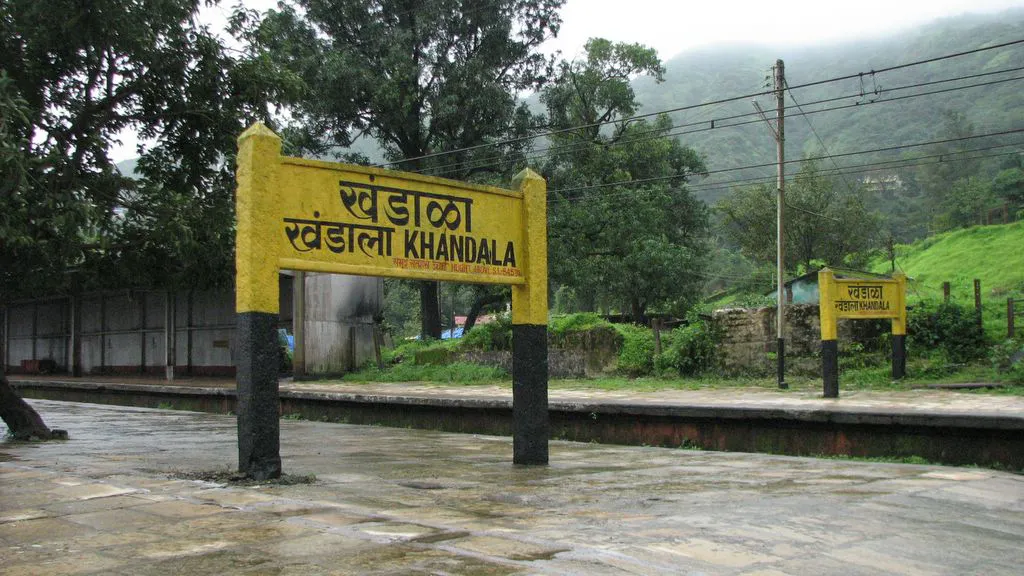
Khandala, a quieter counterpart to Lonavala, is perched at 622 meters above sea level in the Sahyadri ranges, known for its dramatic viewpoints and historical significance. Like Lonavala, it was a key location during the Maratha Empire and later became a British hill station, valued for its cool climate and scenic beauty.
The area is dotted with ancient caves like Karla, shared with Lonavala, and offers access to forts like Rajmachi, a 17th-century stronghold captured by Shivaji Maharaj. Khandala’s cliffs, such as Duke’s Nose, provide sweeping views of the surrounding valleys, while its trails are ideal for trekkers seeking a peaceful escape.
How to Reach from Mumbai: About 80 km from Mumbai, reachable by car via the Mumbai-Pune Expressway (around 1.5 hours) or by train to Lonavala station, followed by a 5 km drive. Buses from Mumbai (Dadar East) to Lonavala can drop you close to Khandala (2-2.5 hours); from there, autos can take you to Khandala (₹50-80). From Lonavala station, autos or shared taxis to Khandala cost around ₹50-100.
Activities: Hiking, visiting viewpoints like Duke’s Nose, exploring Rajmachi Fort.
Nearest Attractions: Bhushi Dam, Tiger’s Leap, Amrutanjan Point, Rajmachi Fort, Karla Caves.
Best Time to Visit: October to March.
Recommended For: Adventure seekers, nature enthusiasts.
3. Matheran
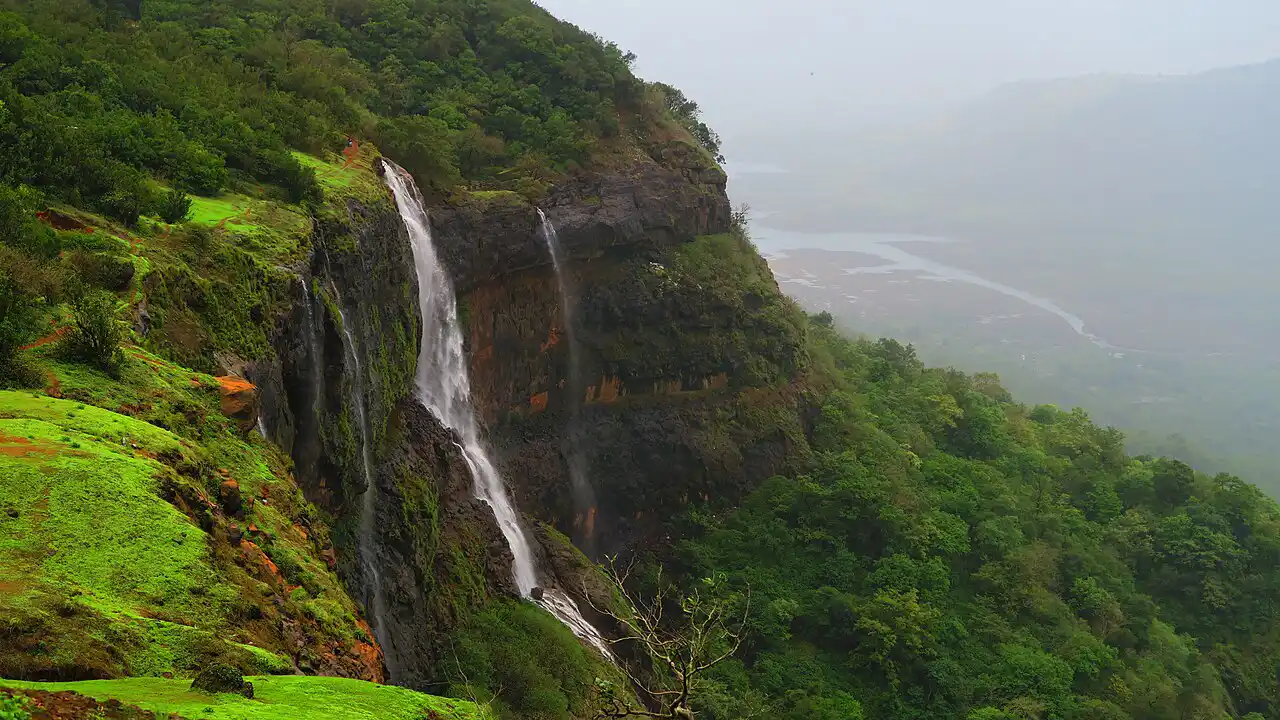
Matheran, located at 800 meters above sea level in the Western Ghats, is India’s only automobile-free hill station, ensuring a pristine environment filled with dense forests and scenic viewpoints. Discovered in 1850 by British officer Hugh Poyntz Malet, it became a summer retreat for colonial officers, and its Matheran Hill Railway, built in 1907, is now a UNESCO World Heritage Site.
The town’s red-soil paths are lined with colonial-era bungalows, and its viewpoints, like Panorama Point and Echo Point, offer panoramic views of the Sahyadri ranges. Visitors can hear the rhythmic *clip-clop* of horses, the only mode of transport, and spot monkeys swinging through the trees, adding to the area’s natural charm.
How to Reach from Mumbai: Approximately 90 km from Mumbai; take a toy train from Neral (accessible by train from Mumbai) or drive to Dasturi Naka, then proceed on foot or horseback. Buses from Mumbai (Parel Depot) to Neral take about 2-2.5 hours; from Neral station, shared autos or taxis to Dasturi Naka cost around ₹80-150, then walk or hire a horse.
Activities: Horse riding, trekking, enjoying panoramic views from Panorama Point and Echo Point, visiting Charlotte Lake.
Nearest Attractions: Charlotte Lake, Panorama Point, Echo Point, Louisa Point, Porcupine Point, One Tree Hill Point, Chanderi Caves, Prabalgad Fort.
Best Time to Visit: December to February.
Recommended For: Trekkers, photographers, nature lovers, families, honeymooners.
4. Alibaug
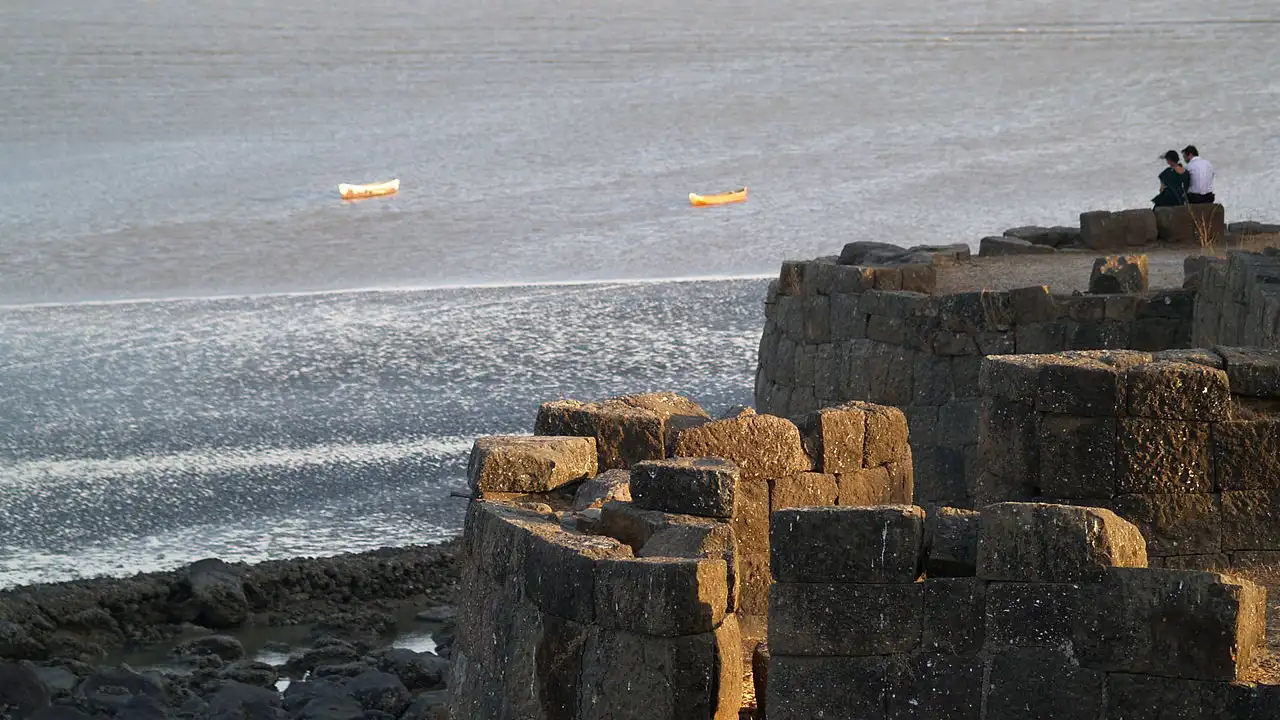
Alibaug, a coastal town on the Konkan coast, is known for its historical significance and sandy beaches, where the Arabian Sea meets golden shores lined with coconut groves. Originally a Portuguese settlement in the 16th century known as “Bassein,” it was later ruled by the Marathas and British.
The Kolaba Fort, built by Chhatrapati Shivaji Maharaj, stands as a prominent landmark, accessible by boat during low tide, and features ancient cannons and stone walls that tell tales of its military past. Alibaug Beach, with its black sand, and Versoli Beach offer spaces for relaxation and water sports, while the surrounding greenery provides a refreshing contrast to the sea.
How to Reach from Mumbai: Approximately 95 km from Mumbai; by car via the Mumbai-Goa Highway (about 2.5 hours) or by ferry from Gateway of India to Mandwa, then a short drive. Buses from Mumbai (Mumbai Central) to Alibaug take around 3 hours; from Mandwa (if taking the ferry) or Alibaug bus stand, autos to the beach or fort cost ₹50-100.
Activities: Beach activities, water sports, exploring historical forts like Kolaba Fort.
Nearest Attractions: Kolaba Fort, Versoli Beach, Kanakeshwar Forest.
Best Time to Visit: November to February.
Recommended For: Beach lovers, history buffs.
You may also read about Ghatshila a hill station in West Bengal- https://www.travelseek.in/top-12-one-day-getaways-from-mumbai-nature-history/
5. Karjat
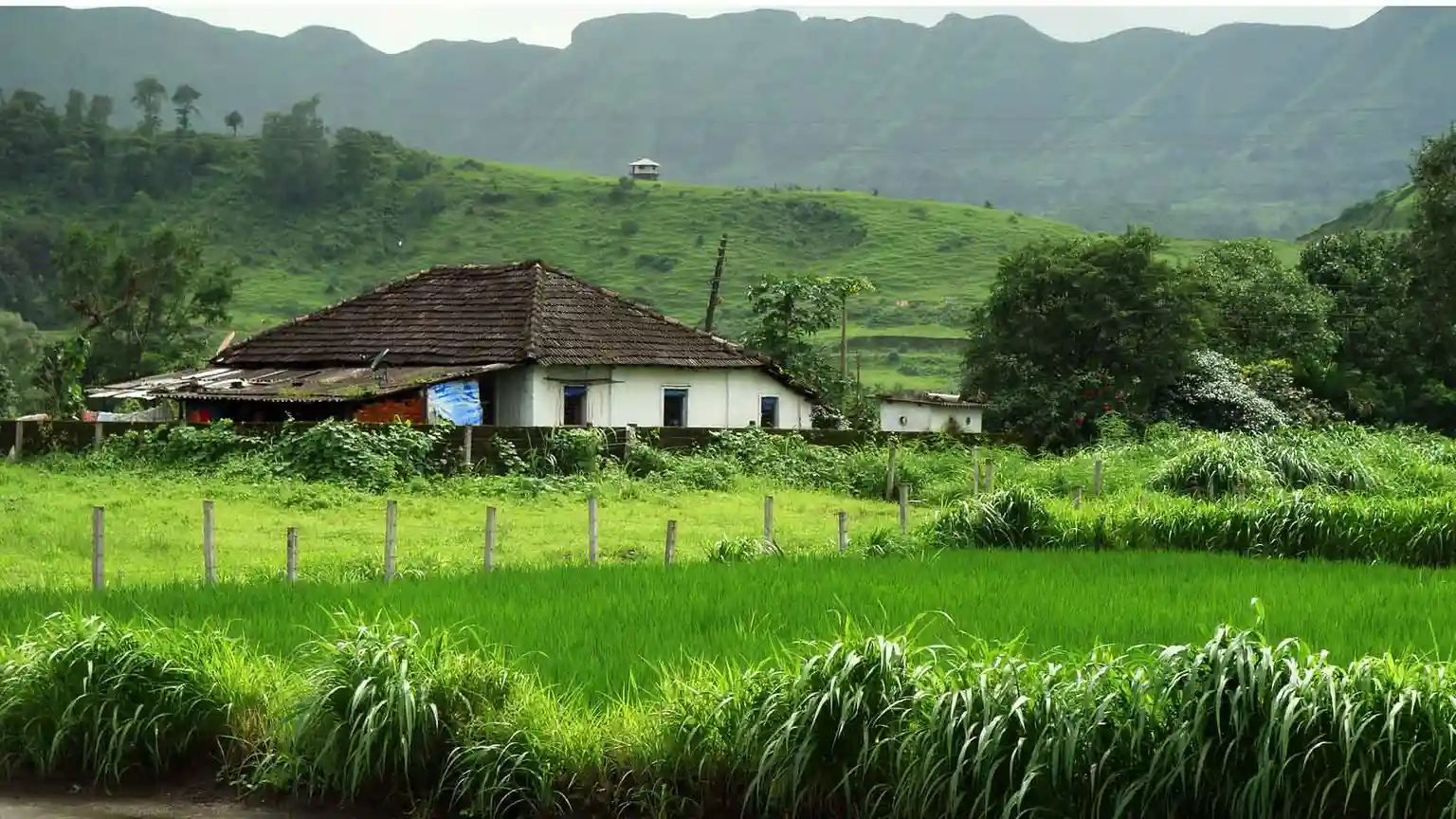
Karjat, nestled near the Ulhas River basin at 636 feet elevation in the Western Ghats, is a haven for adventure seekers, surrounded by rugged hills, dense forests, and ancient historical sites.
The area has roots in Hindu mythology and was part of the Maratha Empire, later becoming a British hill station. The Kondana Caves, dating back to the 1st century BCE, are Buddhist rock-cut caves with intricate carvings, while Kothaligad Fort, a 17th-century Maratha stronghold, offers challenging treks and panoramic views.
The Ulhas River provides opportunities for white-water rafting, and the surrounding valleys are dotted with waterfalls, especially vibrant during the monsoon season.
How to Reach from Mumbai: About 62 km from Mumbai; reachable by car via the Mumbai-Pune Expressway (around 1.5 hours) or by train to Karjat station (frequent trains from Mumbai). Buses from Mumbai (Dadar East) to Karjat take about 2 hours; from Karjat station, autos to Kondana Caves or Ulhas Valley cost around ₹80-150.
Activities: Trekking (e.g., Kothaligad Fort, Kondana Caves), river rafting on Ulhas River, visiting Kondeshwar Temple, exploring Bhor Ghat.
Nearest Attractions: Kondeshwar Temple, Kothaligad Fort, Kondana Caves, Ulhas Valley, Mahavir Temple, Nds Film World, Bhor Ghat, Malshej Ghat, Pune, Matheran.
Best Time to Visit: July-Sep for monsoons and waterfalls; Oct-Feb for moderate weather.
Recommended For: Adventure seekers, families, couples, nature lovers.
6. Karnala
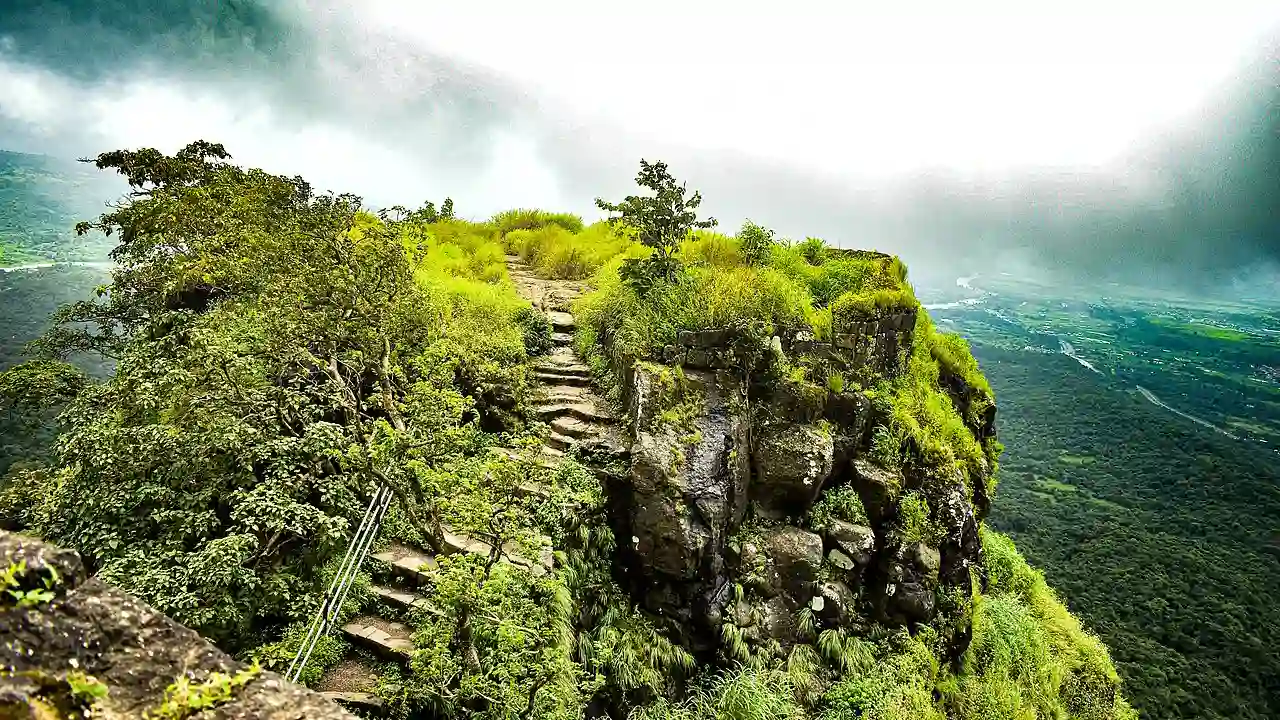
Karnala, located in the Western Ghats, is a biodiversity hotspot centered around the Karnala Bird Sanctuary, which spans 12.11 square kilometers and is home to over 222 bird species, including the Malabar Grey Hornbill and the Paradise Flycatcher. The sanctuary’s dense forests are filled with tall teak and bamboo trees, and its trails lead to the Karnala Fort, a 12th-century Maratha structure later used by the British as a military outpost.
The fort’s pinnacle offers a 360-degree view of the surrounding hills and forests, while the sanctuary below is a habitat for wildlife like leopards, wild boars, and four-horned antelopes.
How to Reach from Mumbai: About 50 km from Mumbai; by car via the Mumbai-Pune Expressway (around 1 hour) or train to Panvel, then a short drive. Buses from Mumbai (Sion) to Panvel take about 1.5 hours; from Panvel station, autos or taxis to Karnala Bird Sanctuary cost ₹100-200.
Activities: Bird watching, trekking, picnicking.
Nearest Attractions: Karnala Fort, Karnala Bird Sanctuary.
Best Time to Visit: November to February.
Recommended For: Families, bird watchers, trekkers.
7. Elephanta Caves
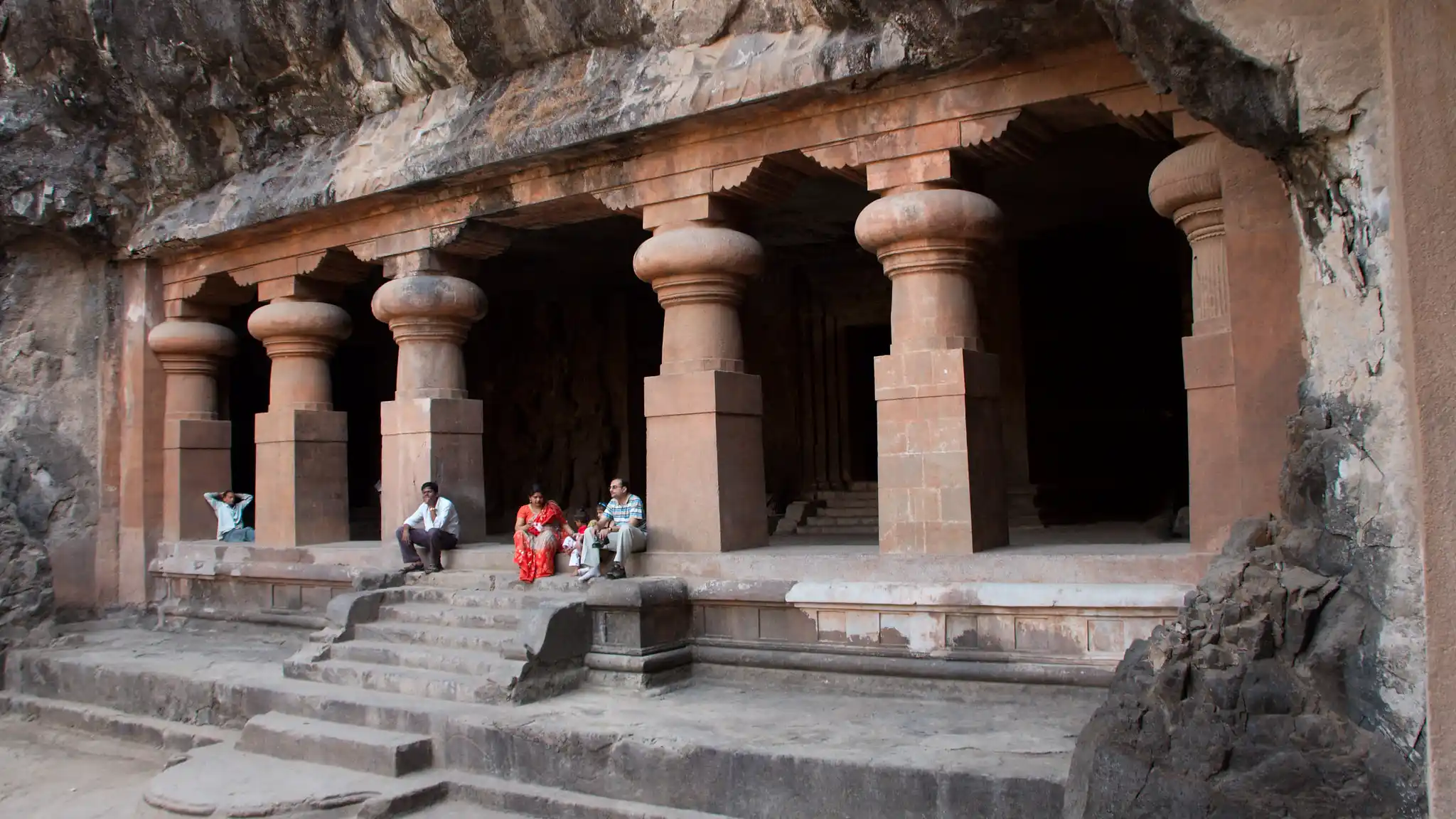
The Elephanta Caves, situated on an island in the Arabian Sea 10 km from Mumbai, are a UNESCO World Heritage Site featuring rock-cut temples from the 5th to 8th centuries, built by the Rashtrakuta dynasty.
The caves are dedicated to Lord Shiva, with the centerpiece being the massive Trimurti sculpture—a 20-foot-tall depiction of Shiva’s three aspects: creator, preserver, and destroyer.
Other carvings, like Ardhanarishvara and Nataraja, showcase intricate details of ancient Indian art. Named by the Portuguese after a large elephant statue, the caves are carved into a basalt hill, surrounded by the sea, offering a blend of spiritual significance and historical insight.
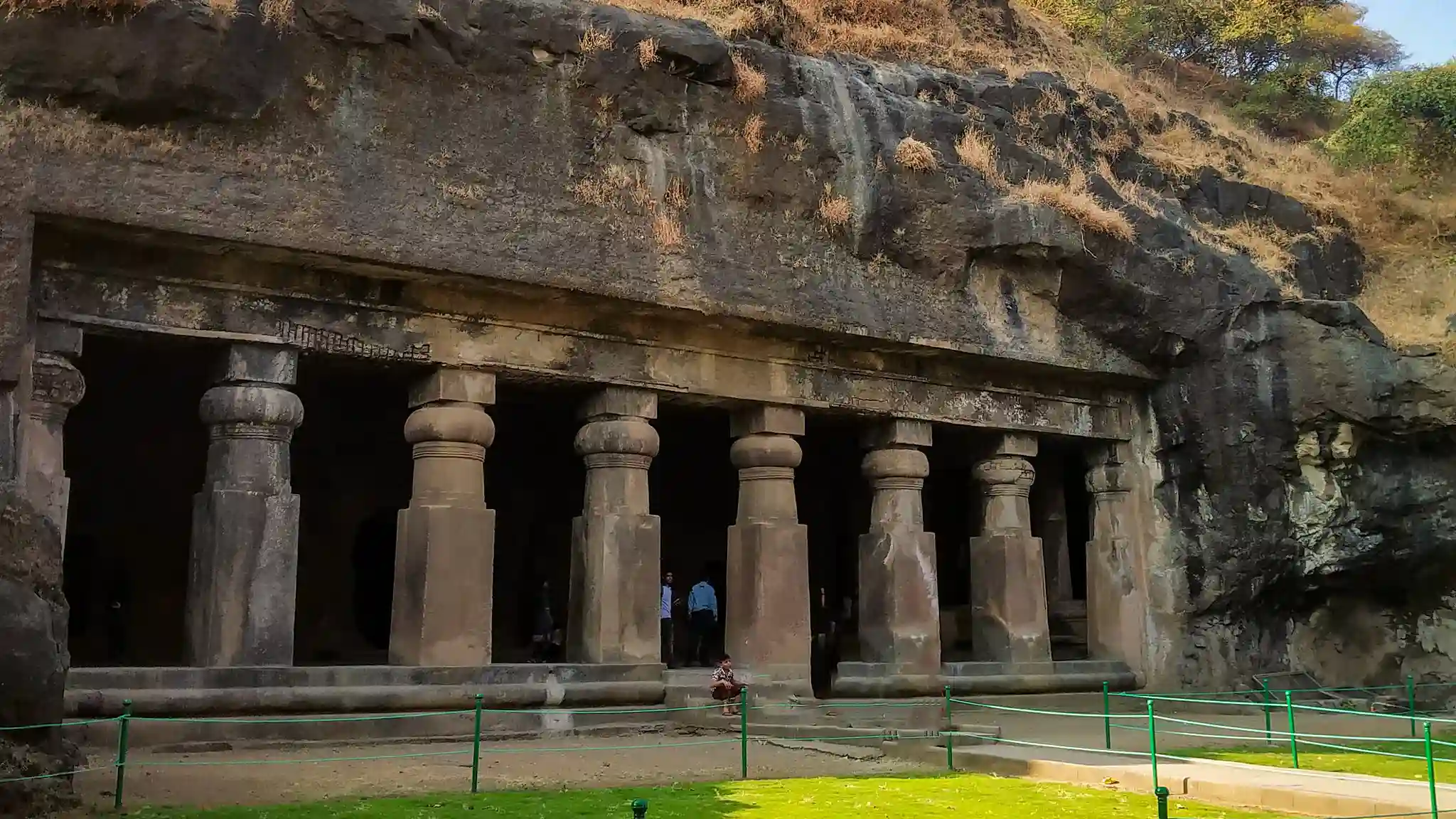
How to Reach from Mumbai: About 10 km from Mumbai; by ferry from Gateway of India (ferry takes 1 hour, ₹200-250 round trip). No direct buses; from Gateway of India, it’s a short walk to the ferry point. No autos needed as the caves are on an island, accessible by a short walk or toy train from the jetty.
Activities: Exploring ancient caves, learning about history and art.
Nearest Attractions: Gateway of India, Chhatrapati Shivaji Maharaj Vastu Sangrahalaya.
Best Time to Visit: November to February.
Recommended For: History enthusiasts, art lovers.
8. Vasai Fort
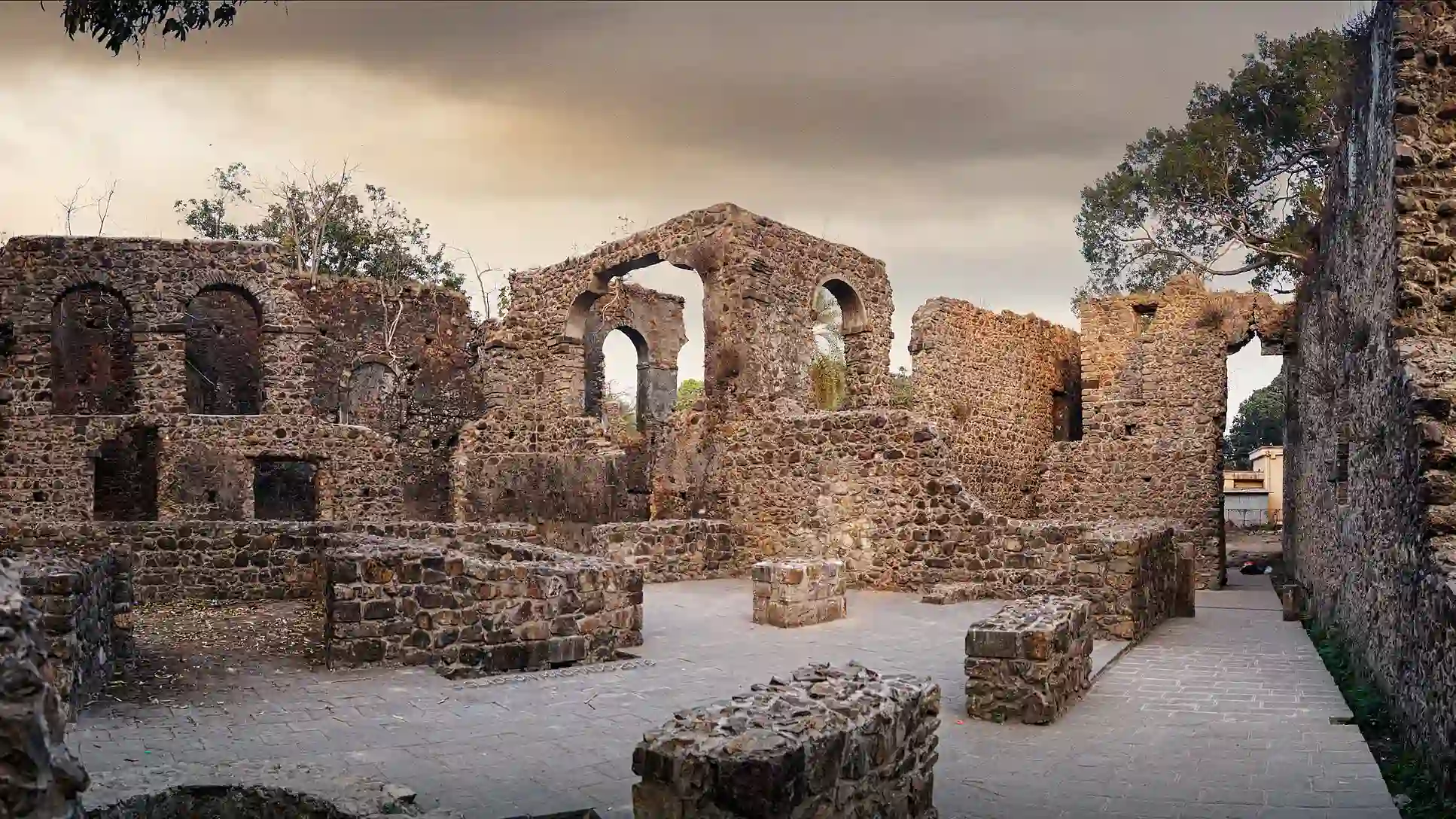
Vasai Fort, located on the banks of the Ulhas River, is a historical site built by the Bahmani Sultanate in the 1530s and later captured by the Portuguese in 1534, the Marathas in 1739, and the British during the First Anglo-Maratha War.
The fort, now in ruins, spans 110 acres and features Portuguese-era churches, watchtowers, and a moat, reflecting its strategic importance as a coastal defense structure. Its stone walls are weathered by time, and the surrounding area offers views of the river and nearby Vasai Beach, making it a popular spot for history buffs and photographers interested in colonial architecture.
How to Reach from Mumbai: Located about 60 km from Mumbai; by car via the Western Express Highway (around 1.5 hours) or train to Vasai Road, then a short drive. Buses from Mumbai (Borivali) to Vasai take about 2 hours; from Vasai Road station, autos to the fort cost ₹50-100.
Activities: Exploring the fort, photography, learning about colonial history.
Nearest Attractions: Vasai Beach, Bassein Fort.
Best Time to Visit: October to March.
Recommended For: History buffs, photographers.
9. Bhimashankar
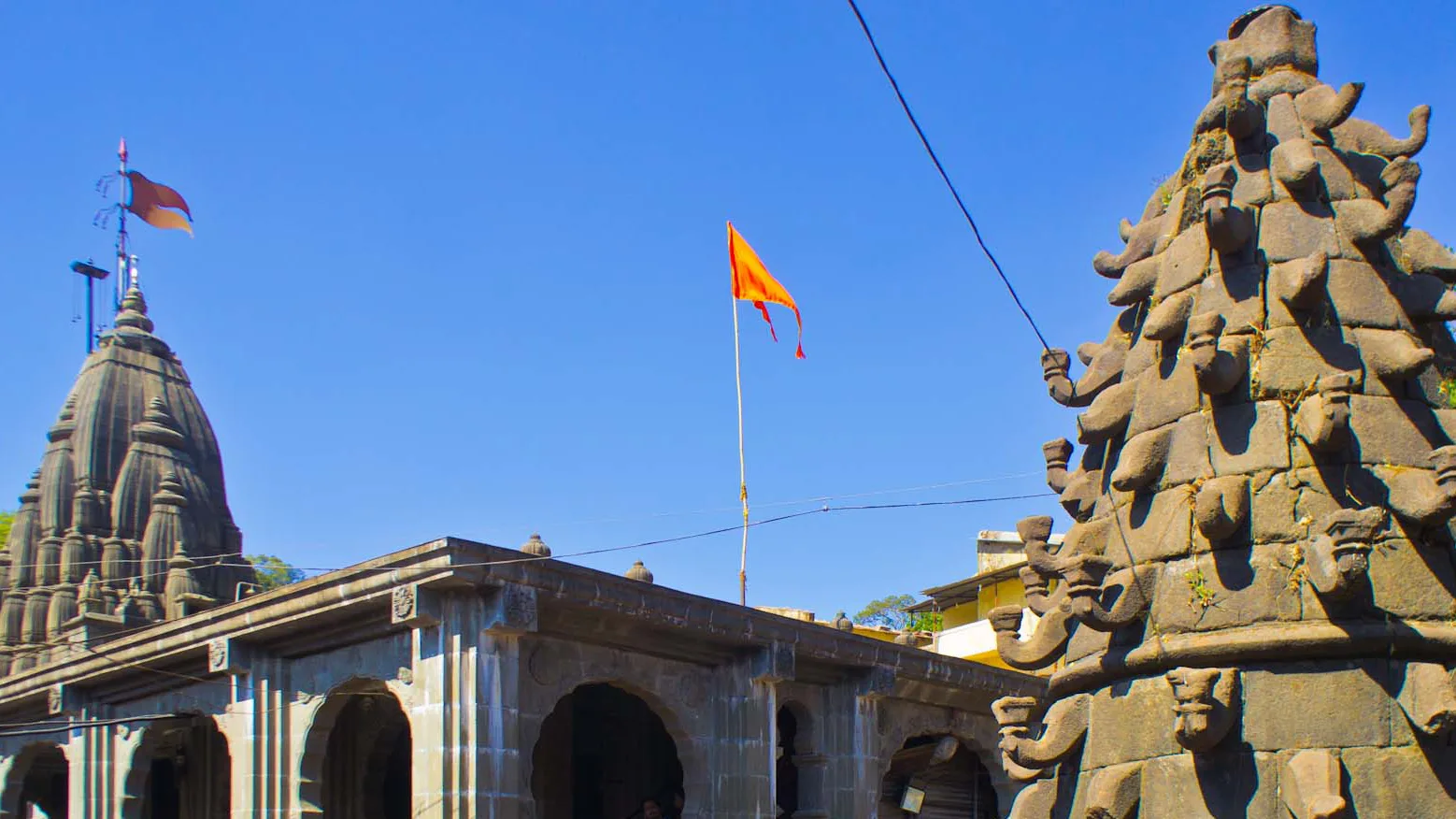
Bhimashankar, perched at 3,250 feet in the Western Ghats, is a significant pilgrimage site as one of the 12 Jyotirlingas, mentioned in ancient Hindu texts as the site where Lord Shiva defeated the demon Tripurasura.
The Bhimashankar Temple, built in the Nagara style of architecture, features intricate carvings and a sacred Shiva Linga, drawing devotees year-round.
The surrounding Bhimashankar Wildlife Sanctuary spans 130 square kilometers, home to the Giant Indian Squirrel, leopards, and diverse bird species, with dense forests of teak and bamboo. The area is also known for its trekking trails, such as the route to Ahupe Waterfalls, offering views of mist-covered hills.
How to Reach from Mumbai: About 110 km from Mumbai; by car via the Mumbai-Pune Expressway and NH60 (around 3 hours). Buses from Mumbai (Pune-bound from Dadar) stop at Bhimashankar (4-5 hours); from nearby Rajgurunagar station, taxis or autos to Bhimashankar cost ₹500-800.
Activities: Visiting the temple, wildlife spotting, trekking.
Nearest Attractions: Bhimashankar Temple, Bhimashankar Wildlife Sanctuary.
Best Time to Visit: October to February.
Recommended For: Pilgrims, nature lovers, trekkers.
10. Igatpuri
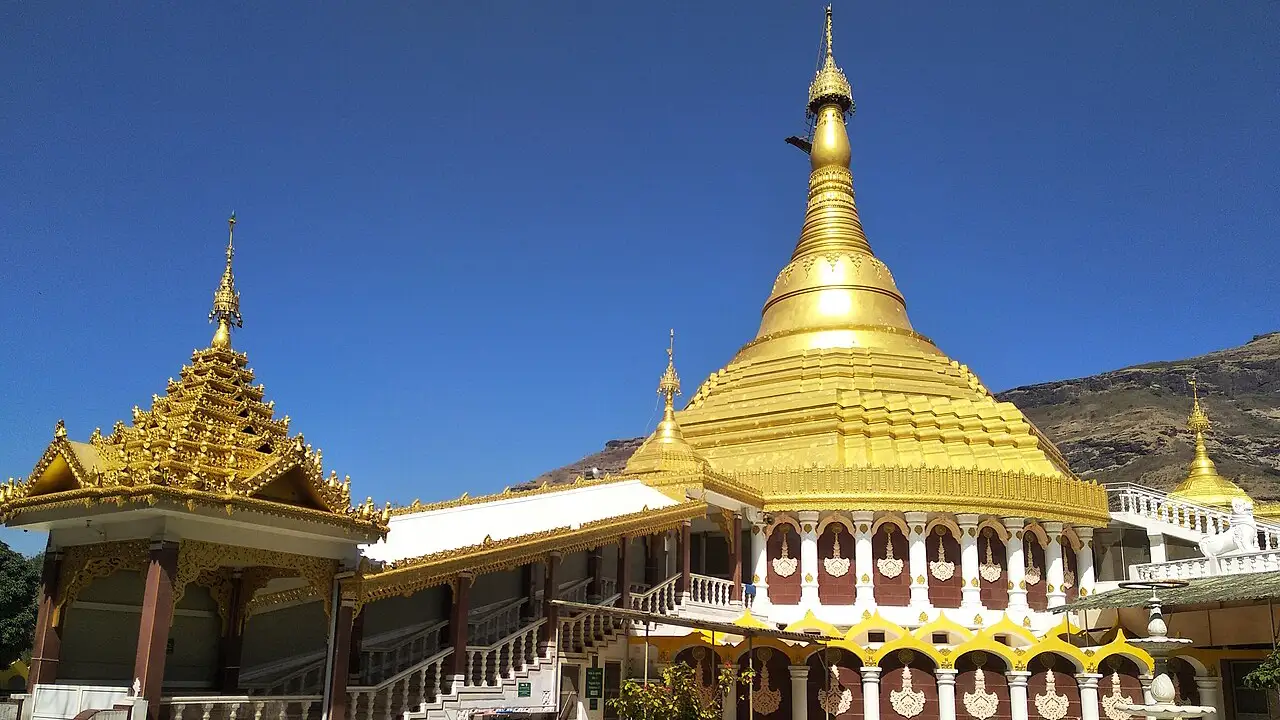
Igatpuri, located at 600 meters in the Western Ghats, is a serene destination known for its spiritual and natural attractions, with a history tied to the Maratha Empire and British era.
The Vipassana International Academy (Dhamma Giri) is a prominent meditation center, offering 10-day retreats in a tranquil setting surrounded by hills.
The area is also home to historical forts like Tringalwadi, a Maratha-era structure with stone walls and a reservoir, and Kalsubai Peak, Maharashtra’s highest peak at 1,646 meters, offering challenging treks with views of the Sahyadri ranges. Igatpuri’s waterfalls, like those in Camel Valley, add to its scenic appeal, especially during the monsoon.
How to Reach from Mumbai: Approximately 120 km from Mumbai; by car via the Mumbai-Nashik Highway (around 2.5 hours) or train to Igatpuri station (frequent trains from Mumbai). Buses from Mumbai (Thane) to Igatpuri take about 3 hours; from Igatpuri station, autos to Dhamma Giri or Tringalwadi Fort cost ₹100-200.
Activities: Meditation at Vipassana International Academy, trekking to Tringalwadi Fort, visiting waterfalls.
Nearest Attractions: Vipassana International Academy, Tringalwadi Fort, Kalsubai Peak.
Best Time to Visit: June to September for monsoon beauty; October to March for pleasant weather.
Recommended For: Spiritual seekers, nature enthusiasts.
11. Murud Janjira
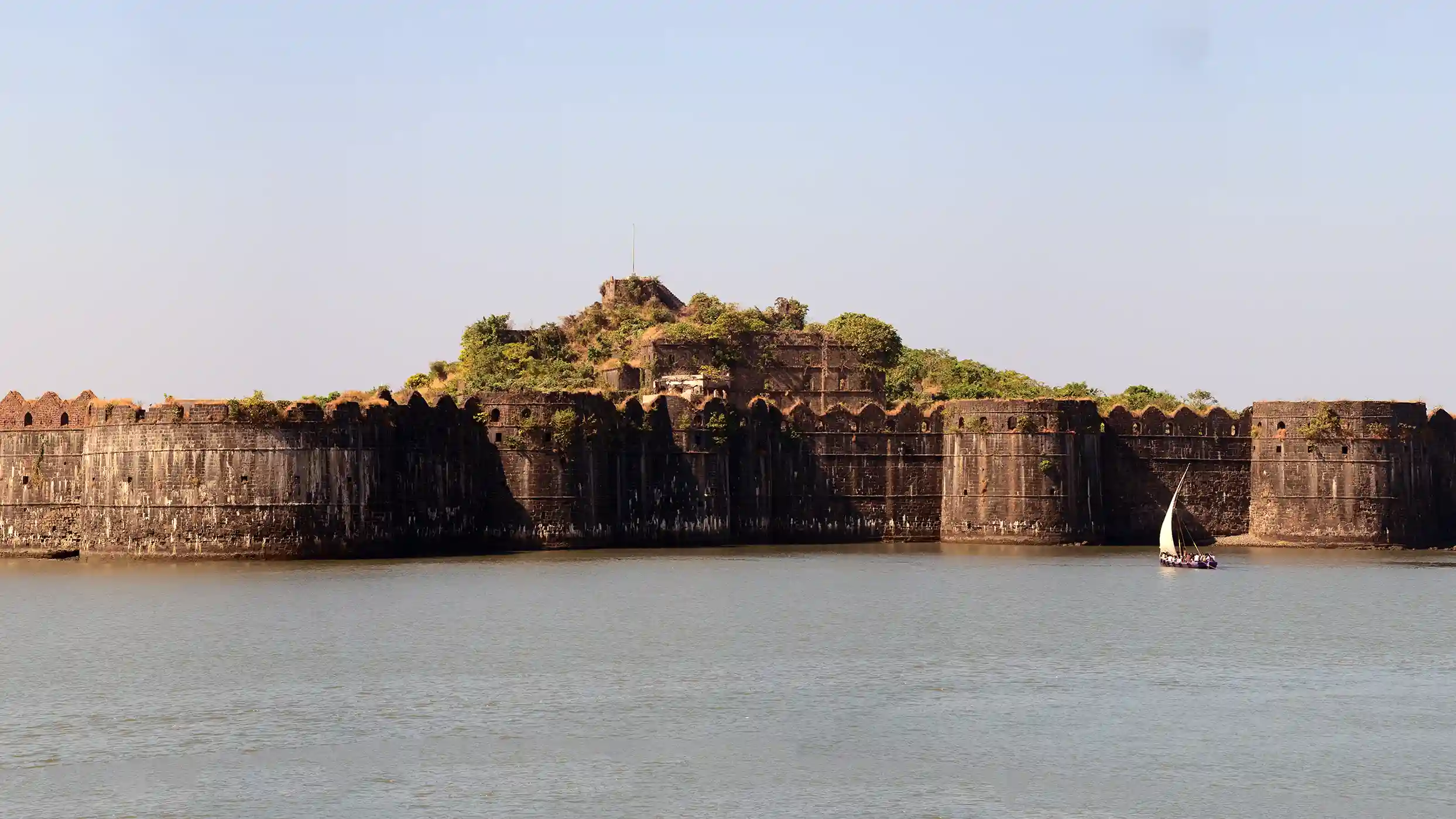
Murud Janjira, an island off the Konkan coast, is renowned for its unconquered sea fort, built in 1524 by the Siddi rulers, who maintained control until the 19th century despite attacks from the Marathas, Portuguese, and British.
The Janjira Fort, surrounded by the Arabian Sea, spans 22 acres and features 19 rounded bastions, ancient cannons, and a freshwater lake within its walls, showcasing its self-sustaining design. The nearby Murud Beach offers a serene stretch of sand with views of the fort, while the surrounding area includes historical sites like the Dattatreya Temple, perched on a hill with panoramic views of the coastline.
How to Reach from Mumbai: About 165 km from Mumbai; by car via the Mumbai-Goa Highway (around 4-5 hours). Buses from Mumbai (Mumbai Central) to Murud take about 5-6 hours; from Murud bus stand, autos to the jetty for Janjira Fort cost ₹50-100. No nearby railway station; Alibaug (50 km away) is the closest, with autos/taxis to Murud costing ₹800-1200.
Activities: Exploring the fort, beach activities, enjoying seafood.
Nearest Attractions: Janjira Fort, Murud Beach, Garambi Dam.
Best Time to Visit: October to March.
Recommended For: History enthusiasts, beach lovers.
Ajanta caves, source YouTube – https://youtu.be/-bIYpHPZH5Q?si=W-2NrIt8mPFREeN4
12. Kashid Beach
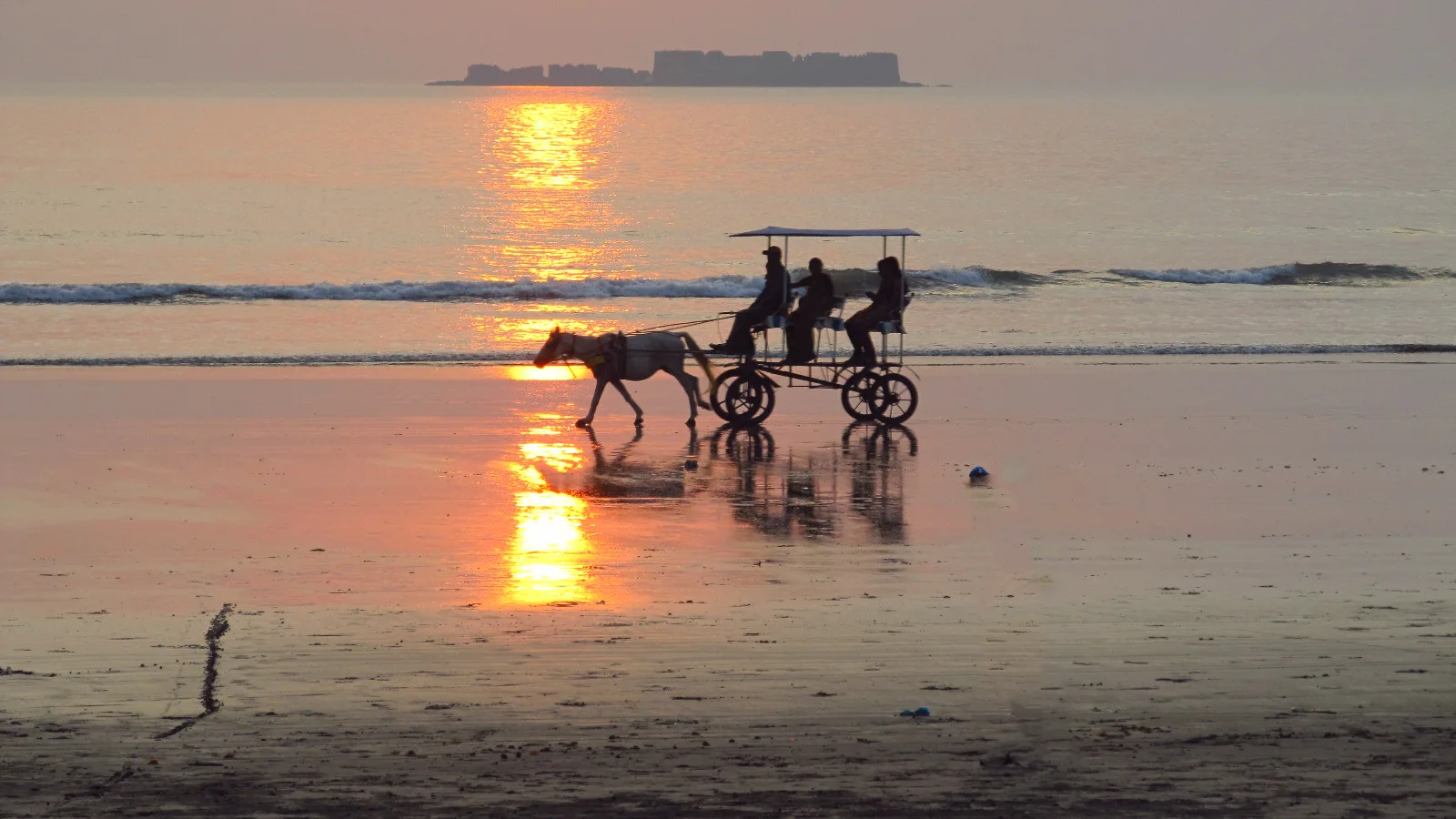
Kashid Beach, located on the Konkan coast, is a tranquil getaway known for its white sandy shores and clear blue waters, stretching 3 kilometers along the Arabian Sea. The beach is part of the region’s maritime history, gaining popularity in recent decades as a peaceful retreat, with coconut groves and low hills providing a scenic backdrop.
It’s a hub for water sports like jet skiing and banana boat rides, and its proximity to historical sites like Murud Janjira Fort adds a cultural dimension. The nearby Phansad Wildlife Sanctuary, spanning 52 square kilometers, is home to leopards, deer, and over 300 bird species, offering nature trails through dense forests.
How to Reach from Mumbai: Located about 130 km from Mumbai; by car via the Mumbai-Goa Highway (around 3-4 hours). Buses from Mumbai (Mumbai Central) to Kashid take about 4-5 hours; from Kashid bus stop, autos to the beach cost ₹50-80. The nearest railway station is in Alibaug (30 km away); autos/taxis to Kashid cost ₹500-800.
Activities: Swimming, sunbathing, water sports.
Nearest Attractions: Phansad Wildlife Sanctuary, Korlai Fort.
Best Time to Visit: November to February.
Recommended For: Beach lovers, families.
Conclusion
These 12 destinations near Mumbai—ranging from the historic Elephanta Caves to the serene Kashid Beach offer the perfect one-day escape, blending nature, adventure, and culture. Easily reachable by car, train, bus, or ferry, they promise a refreshing break from city life. For more such travel insights, we humbly invite you to be with Travelseek.

